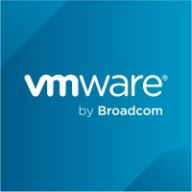

VMware Cloud Director and Zesty are competing in cloud management solutions. VMware Cloud Director has the upper hand in integration and multi-cloud support, while Zesty shines in dynamic resource optimization.
Features: VMware Cloud Director offers integration, multi-cloud management, and robust security. Zesty focuses on dynamic resource optimization, efficient resource management, and targeted cost-effectiveness.
Ease of Deployment and Customer Service: VMware Cloud Director requires skilled management for deployment but offers extensive support channels. Zesty provides a simpler deployment process, prioritizing quick time-to-value and flexible integration with timely customer assistance.
Pricing and ROI: VMware Cloud Director provides scalable pricing with high ROI potential but involves significant initial setup costs. Zesty offers a predictable pricing model focusing on cost savings with efficient resource management, leading to quick ROI and potentially better long-term savings.
| Product | Market Share (%) |
|---|---|
| VMware Cloud Director | 5.4% |
| Zesty | 0.5% |
| Other | 94.1% |


| Company Size | Count |
|---|---|
| Small Business | 24 |
| Midsize Enterprise | 11 |
| Large Enterprise | 36 |
VMware Cloud Director, also known as vCloud Director, is a cloud management tool that offers secure, flexible, and efficient cloud resources to thousands of enterprises and IT teams across the world. The solution serves as one of the leading cloud service-delivery platforms for businesses that want to manage and operate their services effectively. By deploying this solution, companies can benefit from virtualized networking, computing, security, and storage. These benefits can be received in a timely manner, as the infrastructure of the product is operationally ready within minutes and clients do not need to install and configure physical infrastructure.
One of the biggest advantages of vCloud Director is that it allows users to build cloud-ready applications. In several ways, it facilitates the process for developers, including:
vCloud Director Features
This VMware product has various features through which users can virtualize their data and benefit from quality management solutions. Among the popular capabilities of vCloud Director are:
vCloud Director Benefits
VMware vCloud Director offers various benefits to its users. Some of these include:
Reviews from Real Users
Ajit Y., a cloud architect at a computer software company, likes VMware vCloud Director because it is a stable, truly multitenant software and the go-to tool for infrastructure as a service.
Kashif F., a divisional engineer at National Telecom Corporatio, rates vCloud Director highly because the product can be used for infrastructure provisioning without using a platform service.
Zesty offers scalable solutions that empower businesses to optimize their digital presence efficiently. Designed for dynamic online environments, Zesty integrates seamlessly, enhancing digital content management with versatile tools.
Zesty focuses on providing an adaptive content management experience for professionals seeking optimization in web content publishing. Known for its intuitive interfaces and robust architecture, Zesty allows effortless website management, content personalization, and SEO enhancements. With Zesty, businesses can efficiently curate digital content, ensuring swift loading times and superior user engagement. Its extensible features enable integration across different platforms, ensuring streamlined workflow management and enhanced data-driven decision-making.
What are the key features of Zesty?Industries such as eCommerce, healthcare, and media have successfully implemented Zesty to streamline digital operations. For eCommerce, Zesty facilitates rapid product content updates, while healthcare sectors utilize it for managing patient information and media outlets employ it for real-time news publishing.
We monitor all Cloud Management reviews to prevent fraudulent reviews and keep review quality high. We do not post reviews by company employees or direct competitors. We validate each review for authenticity via cross-reference with LinkedIn, and personal follow-up with the reviewer when necessary.